<< Our Photo Pages >> Old Sarum - Hillfort in England in Wiltshire
Submitted by Andy B on Tuesday, 05 February 2013 Page Views: 34380
Iron Age and Later PrehistorySite Name: Old SarumCountry: England County: Wiltshire Type: Hillfort
Nearest Town: Salisbury
Map Ref: SU13783266 Landranger Map Number: 184
Latitude: 51.093087N Longitude: 1.804608W
Condition:
| 5 | Perfect |
| 4 | Almost Perfect |
| 3 | Reasonable but with some damage |
| 2 | Ruined but still recognisable as an ancient site |
| 1 | Pretty much destroyed, possibly visible as crop marks |
| 0 | No data. |
| -1 | Completely destroyed |
| 5 | Superb |
| 4 | Good |
| 3 | Ordinary |
| 2 | Not Good |
| 1 | Awful |
| 0 | No data. |
| 5 | Can be driven to, probably with disabled access |
| 4 | Short walk on a footpath |
| 3 | Requiring a bit more of a walk |
| 2 | A long walk |
| 1 | In the middle of nowhere, a nightmare to find |
| 0 | No data. |
| 5 | co-ordinates taken by GPS or official recorded co-ordinates |
| 4 | co-ordinates scaled from a detailed map |
| 3 | co-ordinates scaled from a bad map |
| 2 | co-ordinates of the nearest village |
| 1 | co-ordinates of the nearest town |
| 0 | no data |
Internal Links:
External Links:
I have visited· I would like to visit
SumDoood would like to visit
Couplands visited on 11th Sep 2023 - their rating: Cond: 3 Amb: 4 Access: 4
Chrus visited on 28th Mar 2019 - their rating: Cond: 4 Amb: 5 Access: 5
XIII saw from a distance on 12th Aug 2015 - their rating: Cond: 3 Amb: 4 Access: 4
TwinFlamesKiss visited on 1st Dec 2012 - their rating: Cond: 5 Amb: 5 Access: 5
SolarMegalith visited on 10th May 2011 - their rating: Cond: 4 Amb: 4 Access: 5
custer visited on 13th Nov 2010 - their rating: Cond: 4 Amb: 5 Access: 5 Photos dont do it justice. So difficult to capture the height. Again must be a great sight from all the small airplanes taking of from nearby runway.
ForestDaughter visited on 25th Sep 2008 - their rating: Access: 5
graemefield visited on 27th Jun 2007 - their rating: Cond: 3 Amb: 4 Access: 3
jeffrep visited on 30th Sep 2005 - their rating: Cond: 3 Amb: 5 Access: 4
scherre visited on 1st Sep 1999 - their rating: Cond: 2 Amb: 4
RedKite1985 visited on 1st Jan 1998 - their rating: Cond: 5 Amb: 4 Access: 5
NorthernerInLondon visited - their rating: Cond: 4 Amb: 3 Access: 5
MartinJEley visited - their rating: Cond: 3 Amb: 3 Access: 4 I recall visiting this many years ago as a young man. I particularly remember the remnants of Bishop Roger's Cathedral.
coin visited - their rating: Cond: 3 Amb: 4 Access: 5
FrothNinja AngieLake TimPrevett JimChampion NickyD have visited here
Average ratings for this site from all visit loggers: Condition: 3.54 Ambience: 4.15 Access: 4.54

Iron Age hillfort, dramatic Norman motte, Norman cathedral ruins and the humps and bumps of the houses and shops of the first Salisbury make this a truly fascinating place to spend the day. Easy access and parking, free admission to the hillfort, but English Heritage admission charge to the motte.
Note: Volunteer 'Neolithic Builders' required from March 2013 onwards, see comments
You may be viewing yesterday's version of this page. To see the most up to date information please register for a free account.
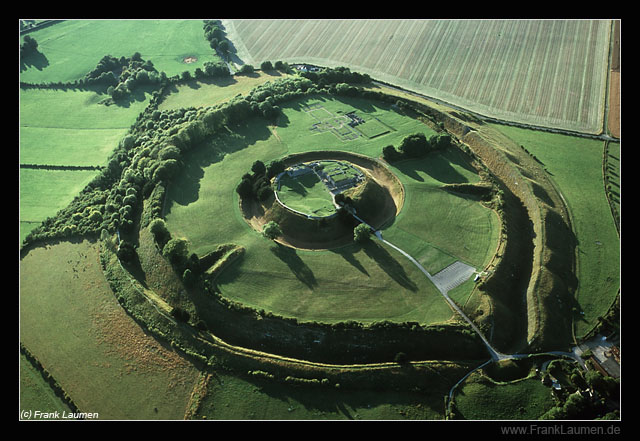









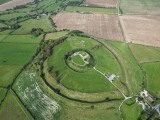











These are just the first 25 photos of Old Sarum. If you log in with a free user account you will be able to see our entire collection.
Do not use the above information on other web sites or publications without permission of the contributor.
Click here to see more info for this site
Nearby sites
Key: Red: member's photo, Blue: 3rd party photo, Yellow: other image, Green: no photo - please go there and take one, Grey: site destroyed
Download sites to:
KML (Google Earth)
GPX (GPS waypoints)
CSV (Garmin/Navman)
CSV (Excel)
To unlock full downloads you need to sign up as a Contributory Member. Otherwise downloads are limited to 50 sites.
Turn off the page maps and other distractions
Nearby sites listing. In the following links * = Image available
1.1km NW 313° North Hill Down* Barrow Cemetery (SU12953343)
3.3km S 175° Salisbury and South Wiltshire Museum* Museum (SU141294)
4.5km NW 310° Newton Barrow* Round Barrow(s) (SU10273556)
4.6km SSE 166° Rowbarrow Salisbury* Misc. Earthwork (SU14902820)
4.6km NW 308° South Newton Round Barrow(s) (SU101355)
4.7km N 355° Little Down Barrow Group* Barrow Cemetery (SU13333738)
4.9km NW 325° Woodford Round Barrow(s) (SU10983670)
5.2km ENE 77° Figsbury Rings* Hillfort (SU18833382)
5.3km NW 320° Heale Hill Round Barrow(s) (SU10343670)
5.4km E 92° Fussell's Lodge* Long Barrow (SU19183247)
5.5km ENE 61° Horse Barrow Round Barrow(s) (SU18623533)
5.7km N 5° Ogbury Camp* Hillfort (SU143383)
5.7km ESE 114° Grim's Ditch 2 (Wiltshire) Misc. Earthwork (SU19023039)
6.0km N 355° Wilsford Cum Lake Bowl Barrow* Round Barrow(s) (SU13213866)
6.6km E 80° Thorny Down Enclosure Ancient Village or Settlement (SU203338)
6.6km SW 235° Neale's Barrow Round Barrow(s) (SU0836228791)
6.9km N 9° Amesbury Down Triple Bell Barrow Round Barrow(s) (SU14833944)
7.0km NNW 343° Lake Down Barrow Cemetery Barrow Cemetery (SU117393)
7.0km ENE 72° Battery Hill Long Barrow Long Barrow (SU20493481)
7.1km ENE 72° Battery Hill Bowl Barrow Round Barrow(s) (SU20573485)
7.2km ESE 105° Clarendon Park Bowl Barrows Barrow Cemetery (SU20733079)
7.3km NW 319° Druids Head Farm Barrows Round Barrow(s) (SU08933815)
7.4km NNW 345° Wilsford Barrow Cemetery Barrow Cemetery (SU118398)
7.6km N 4° Amesbury Down Bowl Barrows Barrow Cemetery (SU14314020)
8.1km NNW 339° Lake Barrow Cemetery* Barrow Cemetery (SU109402)
View more nearby sites and additional images

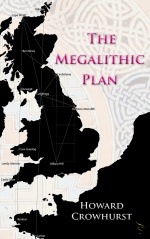
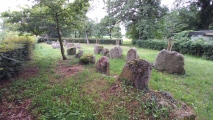
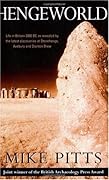


 We would like to know more about this location. Please feel free to add a brief description and any relevant information in your own language.
We would like to know more about this location. Please feel free to add a brief description and any relevant information in your own language. Wir möchten mehr über diese Stätte erfahren. Bitte zögern Sie nicht, eine kurze Beschreibung und relevante Informationen in Deutsch hinzuzufügen.
Wir möchten mehr über diese Stätte erfahren. Bitte zögern Sie nicht, eine kurze Beschreibung und relevante Informationen in Deutsch hinzuzufügen. Nous aimerions en savoir encore un peu sur les lieux. S'il vous plaît n'hesitez pas à ajouter une courte description et tous les renseignements pertinents dans votre propre langue.
Nous aimerions en savoir encore un peu sur les lieux. S'il vous plaît n'hesitez pas à ajouter une courte description et tous les renseignements pertinents dans votre propre langue. Quisieramos informarnos un poco más de las lugares. No dude en añadir una breve descripción y otros datos relevantes en su propio idioma.
Quisieramos informarnos un poco más de las lugares. No dude en añadir una breve descripción y otros datos relevantes en su propio idioma.